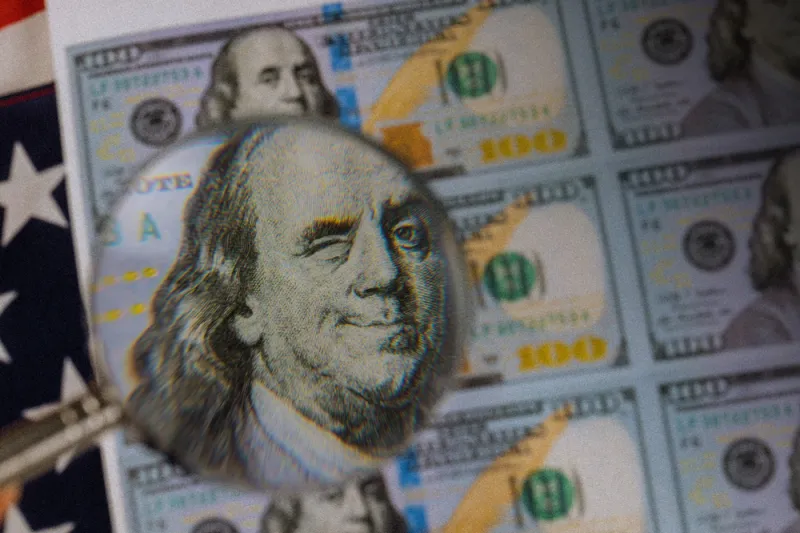Research Affiliates thinks investors would be foolish to dismiss modern monetary theory, an economic doctrine that calls for increased fiscal spending backed by the creation of money.
Progressive politicians have embraced the “heterodox” theory, as they want higher social spending without raising taxes, according to a paper by Chris Brightman, chief investment officer of Research Affiliates. His paper, expected to be released Monday, takes a skeptical view of MMT. But, he warned, policies influenced by the doctrine are increasingly probable.
“Savers and investors may wish to revise financial plans to allow for the heightened risk of inflation,” Brightman wrote. “Informed investors can prepare by paring back positions in mainstream stocks and bonds, diversifying into real assets, and revising down future real return expectations.”
MMT is attracting a following partly because it promises to help reverse wealth inequality, which conventional monetary policy has partly fueled, Brightman argued. Bull markets that central bankers help create benefit the relatively few Americans who own stocks. “Pumping liquidity into financial markets as the standard response to stock market and economic turbulence inflates asset price bubbles and thereby exacerbates income inequality,” he said.
“Three U.S. billionaires are now collectively worth more than the 160 million Americans in the bottom half of the wealth distribution,” wrote Brightman. Before joining Research Affiliates, he was chief executive officer of the University of Virginia’s investment office.
The disparity has even unsettled the ultra-rich.
Billionaire hedge fund managers Paul Tudor Jones and Ray Dalio have been voicing concern about the wealth divide in the U.S., pointing to the wave of populism since the Great Recession. The growing disparity increases the risk of a revolution, Jones said at a conference in February.
[II Deep Dive: Why Paul Tudor Jones Fears a ‘Revolution’]
At the same conference, Robert Shiller, the Nobel Laureate who teaches economics at Yale University, noted how U.S. congresswoman Alexandria Ocasio-Cortez unexpectedly burst onto the political stage as a viral force. Ocasio-Cortez, a New York Democrat representing parts of Queens and the Bronx, has helped drive conversation about MMT. She has also proposed a 70 percent marginal tax rate on incomes over $10 million.
“Promoters of MMT back a massive increase in government control of the economy, from universal health care and free college education to an immediate transition to clean energy as well as government jobs for all of the unemployed,” Brightman wrote in his paper, which did not name the Congresswoman. Under the economic doctrine, governments with fiat currencies can fund any amount of spending simply by creating new money, he said.
According to Brightman, MMT assumes taxes and regulation can prevent inflation caused by too much government spending.
“Relying on Congress to manage inflation through tax policy seems recklessly naïve regardless of whether it would be theoretically possible,” he said. The Research Affiliates CIO is concerned that a policy move toward MMT could lead to stagflation, last seen in 1970s when interest rates and unemployment climbed in tandem.
“When I began my first college economics course, the U.S. inflation rate was racing at double digits, while the unemployment rate was headed to nearly 11 percent, its post-WWII high,” wrote Brightman. He earned an undergraduate degree in finance from Virginia Tech in 1983 and an MBA from Loyola University, Maryland in 1990, according to his LinkedIn profile.
“A month before I began my university studies in 1979, President Carter nominated the then-president of the Federal Reserve Bank of New York, Paul Volcker, to chair the Federal Reserve Board of Governors,” said Brightman. “Volcker embraced monetarism, intentionally slowed the growth of the money supply, and allowed market interest rates to rise above the double-digit level of inflation.”
Whether rapid expansion of money or oil price shocks caused the Great Stagflation remains a subject of debate, he wrote. “Monetarism solved the inflation puzzle,” he said, but monetary theory is more complicated today because financial technology has changed “the nature of money.” He explained that central banks can’t measure its supply as many people don’t have bank accounts and transact with smart phones. “In place of monetarism’s simple target for the growth of money, central banks now target a low and stable rate of inflation, with an emphasis on expectations and forward guidance.”
Little has been published on MMT in “the traditional manner,” the paper noted. Its supporters instead use blogs and podcasts to communicate their ideas. Still, he said investors should be aware that “MMT-inspired policy raises the risk of inflation,” possibly including unexpected shocks that cause stock and bond prices to plummet.







